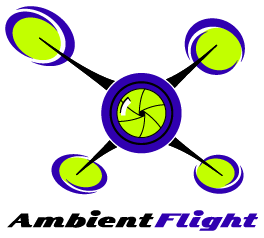

Due to my not being able to see my large hexacopter off in the distance and getting quite floored by losing visual and FPV, I decdied to get some bright navigation strobes for it. Here they are:
Today we get the first look at the new flight controller from XAircraft, the MiniX. XAircraft is known for their high end controller called the SuperX, which I have installed in my large heavy lift hexacopter. The MiniX is a lower price point controller, meant to compete for the market of small and mid-side multi-rotor copters.
The Box
Looks a little like the old Apple OSX DVD packaging…
First Opened
When opening the box, this is the first thing one sees.
Goodies Inside
The GPS puck, OSD unit, flight controller, GPS tower, cables, misc items included in box. Included but not in this photo are some pieces of double-sided tape and the MiniX quick guide.
MINI Sized
The MiniX really is mini. It is tiny mini. Below is a photo of the three primary pieces, the OSD, FC, and GPS, next to a USA quarter for scale.
MiniX Review Soon
Soon I’ll be installing the MiniX on a 680 sized foldable quadcopter and doing some testing in preparation for a full review of the MiniX system. Stay tuned.
Winter is in full force here with plenty of snow and very cold temperatures. I’ve been working on fine tuning the settings for my large hexacopter (six propeller drone) this year, and when the snow and cold hit I saw that as an opportunity to capture some “winter” themed video and photos for my demo reel. The cold temperatures threw all sorts of monkey wrenches into that idea.
How Cold Temperatures Affect Drones
Drones are highly technical machines with motors, sensors, tight tolerances. The cold temperatures can affect the sensors such as the gyroscope and accelerometers, causing them to misbehave or produce unexpected results. This can affect the flight characteristics of the bird.
Camera gimbals, which are used to keep cameras level or smooth out motion, also have these types of sensors. Cold temperatures can cause gimbals to perform differently than they would in warmer temperatures. One way to try and get around these issues is to calibrate the sensors in the same cold temperatures, not in the warmth of the shop.
Batteries can be greatly affected by the cold. There’s a reason why Sears advertised that their Die Hard car batteries performed in extreme winter conditions, because cold can reduce battery performance. Cold temperatures typically translate to shorter flight times. This is very important to keep in mind for those who time flights rather than keeping an eye on battery voltage. I’ve found that in very cold temperatures the voltage drops quickly at first, but does level out a bit toward the end of the flight.
Brittle parts can be a problem. If there are parts of the drone which need to be tightened before flight, doing so in the cold could result in easy breakage. For instance, the arms on my hexacopter are foldable. I make sure they’re tightened down in the warmth of my house and that I don’t tighten them down outside in the cold. Hard landings in the cold with more brittle parts could mean more damage to the bird in a crash.
Lastly, the pilot can be greatly affected by the cold. While flying yesterday in 12 degree fahrenheit temperatures, my bare fingers were numb about five minutes into the first battery set. Numb fingers can be a very bad thing when the feel of the controls on the remote is so important. With a numb thumb I could easily bump the throttle down and not feel that I’ve done so. A bad bump could mean reducing thrust enough that the bird falls from the sky, or perhaps a bump up in throttle might turn the bird into a kamikaze.
Air Density
Cold temperatures mean higher air density. This can change the flight characteristics of the drone. With higher air density the same propellor RPMs produces more lift. The motors will not have to work as hard, which could be a positive or a negative depending on the setup. Usually it is a positive though, producing slightly smoother flight and working the setup a little less.